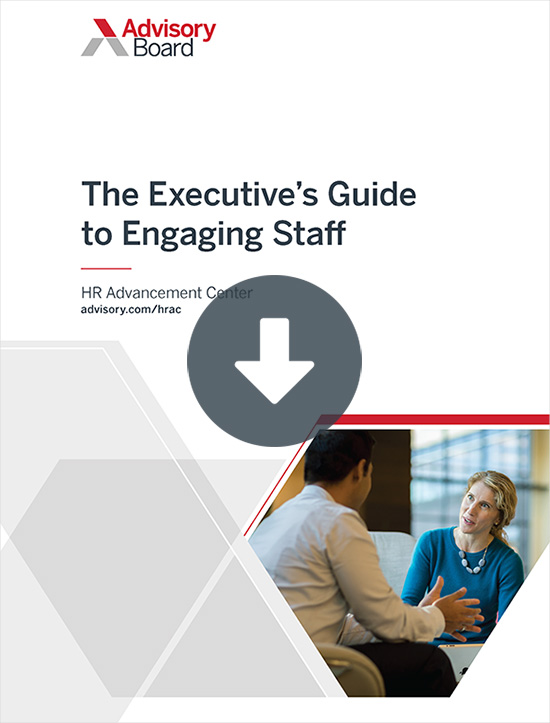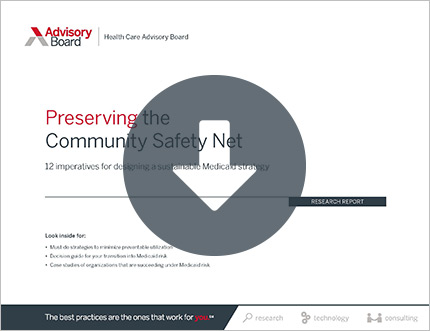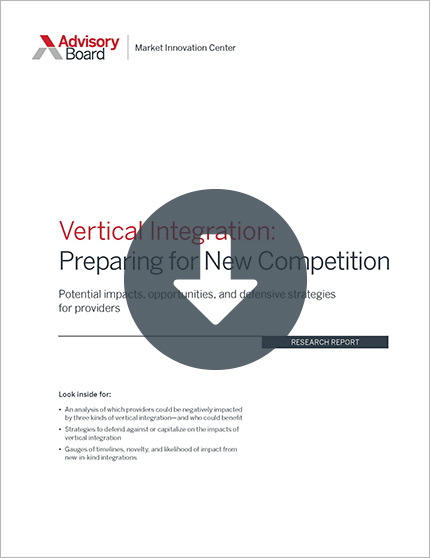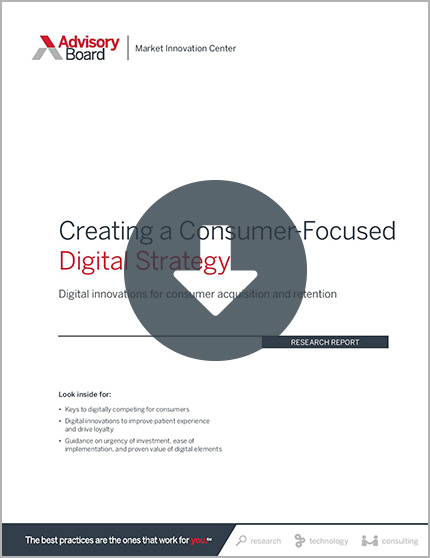Auto logout in seconds.
Continue LogoutWelcome to the "Lessons from the C-suite" series, featuring Advisory Board President Eric Larsen's conversations with the most influential leaders in health care.
In this edition, Howard Kern, president and CEO of Sentara Healthcare, describes Sentara's award-winning approach to spreading best practices throughout its system, previews its new "digital front door" that will transform how patients interact with the health system, and reveals how Sentara has turned Medicaid managed care into a successful business.
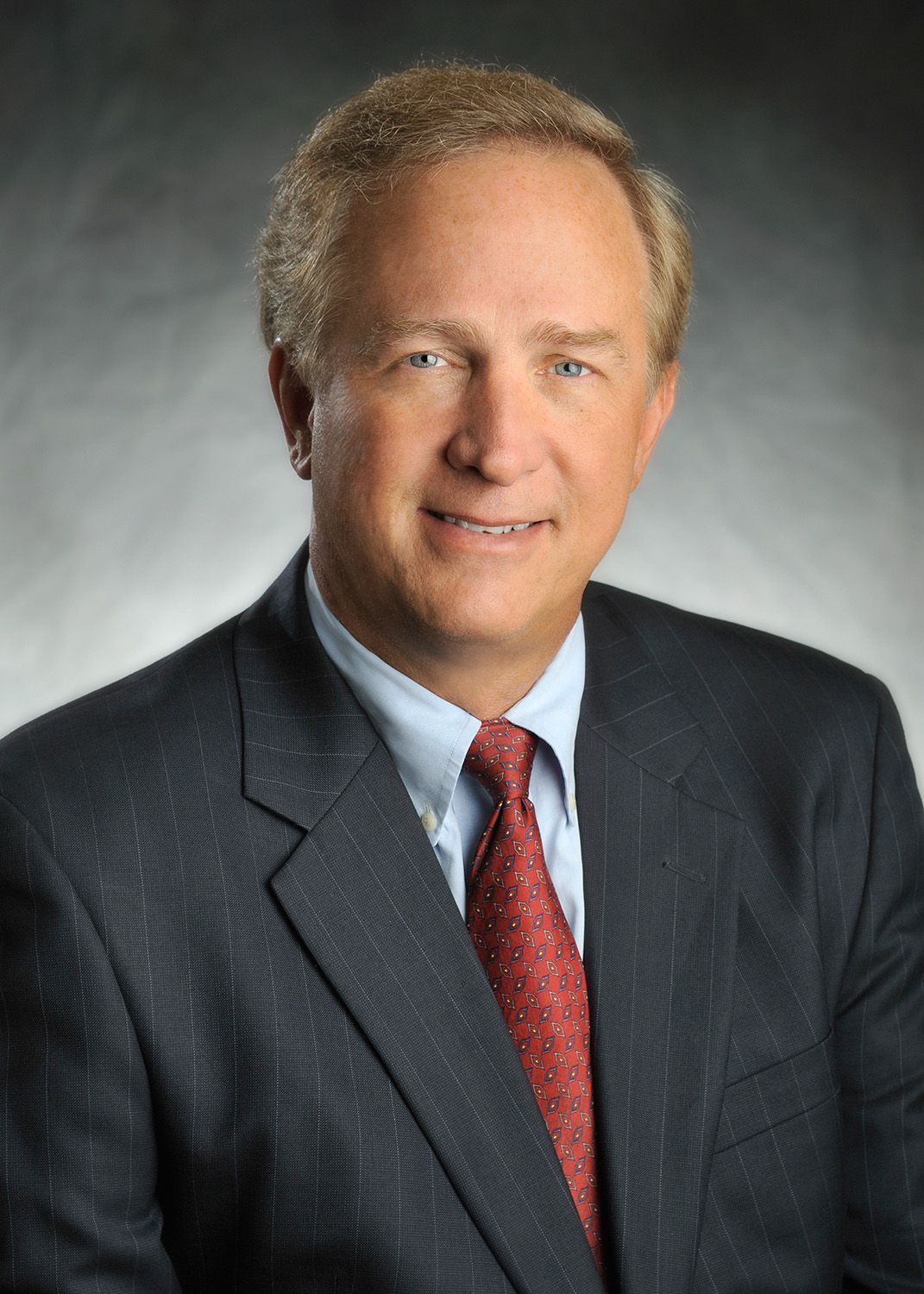
Howard Kern, president and CEO of Sentara Healthcare
Question: Howard, you've spent 38 years rising through the ranks at Sentara—now a $6.3 billion revenue, 12-hospital, 550,000-lives system—ultimately becoming CEO in 2016. That's a remarkable tenure. Let's go back to the beginning for a moment: What was your initial gravitational pull to health care?
Howard Kern: In college, I was really interested in the sciences. I spent a lot of time in the laboratory, which, as you know, are in the sub-basements at most undergraduate universities. No windows. No people. I came to realize that I missed the social interaction. I didn't like the idea of going into the lab before the sun came up and leaving after the sun went down, never seeing the sun or other people.
So I went to the library and looked up a government publication on high growth careers. This was 1977. (Al Gore hadn't invented the internet yet!) The number one area of growth was IT, number two was nursing, and number three was health care administration. I researched what exactly health care administration meant and it piqued my interest; it had a science side to it while also incorporating the interpersonal that I was missing in the lab.
Q: So you're out of the subterranean lab, go on to graduate school, and then take a fellowship at Sentara in 1980. You were only supposed to stay for a few months. That few months clearly got extended a bit. What happened?
Kern: Well, a crisis happened. The Joint Commission—after giving us four, successive, one-year provisional accreditations—warned that they wouldn't provide another one. There were many deficiencies relating to quality, peer review, and credentialing among the most serious. Our medical staff leadership were all volunteer, full-time physicians, so I was hired to provide administrative support.
The two hospitals that comprised the system had merged in the 1970s, but they still didn't have a unified administrative structure.
Now, I was a brand-new post-administrative fellow, and I had never worked with doctors before in any significant capacity—but I met with the president and president-elect of the medical staff and all the chiefs, and we made a plan together, and we got the deficiencies fixed. In fact, by the end, the surveyors were singing the praises of the medical staff.
Q: That's a great moment. And a powerful learning experience at an early career stage.
Kern: It sure was. I learned, more than anything, the importance of empowering our medical staff, because there's no way I could have done it if they hadn't realized it was necessary. And that lesson—how important it is to engage physicians, to make sure they understand that accomplishing this is in their self-interest—has been integral to my approach ever since.
Optima's origin story
Q: One of the ways you first made your mark at Sentara was by founding its health plan, Optima, which is now responsible for 550,000 lives. You launched that project in 1983, years before many other health systems started looking at the health plan market. How did that come about?
Kern: When I joined Sentara in 1981, we offered our 2,500 employees a fully insured product, called "claims made" program, with Blue Cross of Virginia. Every year, Blue Cross would look at our annual claims and set the rates for the next year.
I had done a project in grad school on self-insurance, so I did the math and discovered that we were essentially paying Blue Cross as an employer for hospital claims more than Blue Cross was reimbursing our hospitals! And what's worse, we weren't even getting our employees to utilize our hospitals half of the time.
So we renegotiated to a self-insured plan with an ASO structure. I suggested that, if we structured incentives within our own plan, we could give our employees a significant plan incentive to come to our hospitals, which would help our health plan save money. We restructured the contract, and sure enough, our employees started using our hospitals more. We ended up saving about $2.5 million a year.
Q: And how did that initial effort lead to launching an external health plan?
Kern: From our initial success, I realized we could offer a similar product for other employers in town. We couldn't offer insurance yet, but I successfully pitched our services to a local shipyard by helping them establish their own ASO structure with our network of hospitals and providers. They saved a ton of money—they loved it.
Eventually, I realized that we could be in the insurance business. All we needed was an insurance license. So we built a team in 1983, and that's how we got Optima off the ground in 1984.
Q: What does Optima's path look like from here?
Kern: We are on a wonderful growth path. We've got a great team and a great plan to take us from 550,000 lives—where we are today—to 700,000 lives over the next three years and to more than a million in five years.
And, over the next three years, we'll take our revenues, which are already over $2.3 billion on the health plan side, and get that up to $3.8 billion.
Q: Is any of that growth going to come from joint venturing or white-labeling of the plan with other not-for-profit systems?
Kern: Some lives that will be in more of a white-label, with a different structure. And we'll be equity partners, but we will operate it.
Overall, I'd estimate that maybe 20%, 25% of the doubling of our plan's size—so, when we're at a million lives—will be based on this kind of joint-venture structure. It's a material number, but that's because when you enter a new market, you have to engage major provider players in a way that gets them in the game. And to get that many lives, we're going to get into new markets—we're not going to get those numbers in Virginia alone.
Upcoming webconferences
Thursday, May 23
The 4 must-do steps to grow your service lines
Tuesday, June 11
How to win the race for ambulatory surgery market share
Tuesday, June 18
9 ways to realize pharmacy’s full value
Q: Health system leaders around the country express a lot of curiosity about what separates successful provider-sponsored plans from the many shuttered or struggling efforts to date. Among the 40 provider systems nationally that have formed new health insurance companies or acquired existing health plans since 2010, there aren't a whole lot of encouraging case studies.
So tell me: You've had more than 30 years to get this right with Optima. Do you think it takes that long to figure it out? Or are there extractable lessons to your success?
Kern: First, there's no excuse for not having competent, knowledgeable leadership. Too many organizations try to get into this business with in-house talent who don't know what they are doing. If your leadership doesn't know what they are doing, you're in trouble before you even start.
Second, there's a cultural learning process with your organization of doctors, hospitals, and network players—and if you get into managed care, you can't shortcut there. It's painful, and the economics are just difficult until you get through that process.
Medicaid and Medicare Advantage
Q: Let's dive deeper into Optima's lives, and specifically into one of the most complex populations you serve—managed Medicaid. Most nonprofit systems are serving the Medicaid population out of mission orientation, and are struggling to make the reimbursement work; they're certainly not trying to take on first-dollar risk with this complicated population. But Sentara has figured out how to do that profitably. Talk about the lessons learned.
Kern: We realized many years ago that state-managed Medicaid was poorly coordinated, with poor care management. We thought we could provide better care coordination and better care quality—and we could do it in a way that would cost the state less. And from our perspective as a health plan, we thought we could do it more efficiently for the plan. It was a win-win-win.
The real test for us came years later, when Gov. Terry McAuliffe (D) launched the Medicaid Long Term Services and Support for Virginia. It's this very complex program, with huge components related to community-based social determinants, high complexity, chronic care, nursing home care, and risk. Now, we've gotten into it with what is, at least starting out, a 0.4% risk base premium structure. It's not a lot, but there are a lot of people in there with us, so we'll make it work.
Q: Do you think other nonprofits should try to figure out how to assume delegated risk on Medicaid?
Kern: Absolutely—although they have to understand their market. Are they in a market where they can enter without having a plethora of the big national players? Because if you're in a major market, you have to be cognizant of how those big players are going to react: Do you have the resources to deal with them? The providers you need? Enough network? But what I'm trying to say here is that it can be done.
Q: You've also re-engaging with the Medicare Advantage (MA) population, after getting in/out of that market a few times in the past. Why are you stepping back in?
Kern: The first time we looked at MA was in the late 1990s. We acquired Maxicare HMO in Hampton and Newport News market. They had a bunch of staff model employees, so we utilized that to launch a Medicare product that was built around our Hampton General Hospital—we gave beneficiaries big discounts at that hospital.
Our health plan execs were bragging about how they were making money on MA, but on the hospital side, we spotted this huge discrepancy. We explained that if you took the net of what we could get paid on traditional Medicare at Hampton General and compared it with what we were getting paid by our own health plan for MA, we were actually losing money. So that was our first experience with MA.
Q: What's different this time around?
Kern: Two things: First, we have to get the right doctors in the right place to manage it correctly. Coding is critical, it must be accurate. And second, we have to get our marketing straight, in terms of how we target the right markets and sell the plan. Previously, we did not do that right.
It's still early. Right now we only have about 4,500 MA lives. Frankly, there's a fundamental problem with anybody in the MA business, because you have to get to a certain scale—at least 10,000 really—just to be efficient. But it's all good. We learned our lessons from the past.
How Sentara integrates care
Q: Another salient characteristic of Sentara is how successfully you've integrated as a system, arguably one of the most elusive priorities CEOs are struggling with across the industry. In fact, ever since Modern Healthcare started rating integration, you've been ranked among the—if not the—top-most integrated systems in the country. What are some of the lessons learned here and how replicable might Sentara's experience be?
Kern: It's difficult to replicate, that's inarguable, but integration is something we have always tried to drive at the system level. I'm really proud of the recognition we received from IBM Truven Watson and other lists that report on individual hospitals. But the individual hospital performance isn't what I'm big on—we're only as good as our lowest-performing hospital and that's key for me. You can brag about your top hospital. A lot of systems do that. But in a high-performing health system, where there's great systemness, you can get the best performance from anywhere in the system—the biggest hospital or the smallest—and emulate that across the system. And a great system can learn and emulate that fast.
In 2013, we realized that we had to get better performance, we developed a high-performance design model aimed at driving out variation and standardizing best practices. Now, some variation is good, to the extent that you can innovate, learn, and improve—but we want to get rid of unwanted variation.
Q: Let's expand on this further, because this internal transfer and dissemination of best practices you're describing is one of the least-captured benefits of system integration. The academic literature says it takes 17 years from identification of best practice to adoption of best practice across the enterprise. You've evidently figured out how to speed that up a bit.
Kern: Yes, and we drove that through both a structural and cultural agenda. From a structural perspective, we broke down the balkanized structures of individual hospitals. Across the organization, each hospital had its own quality committees, its own executive committees, and its own medical staff. And we said no more. Everyone will get input, every division can learn individually—but, once we identify the best practice, then it goes live across the whole system.
Now there are a couple things that facilitate the effort. Obviously, having an EHR that's standardized across all the systems helps. We're also have system operating support across all the divisions, and that's something driven by an engineering team, reporting out of corporate, that I built back when I was COO. The team has about 12 people most of whom have a background in industrial engineering, and they kind of serve as our project management office.
Q: Fascinating. And on the cultural side?
Kern: You've got to have leaders who understand that we've got to work as a team. We spent a lot of time developing a mission statement that says, "We need to drive best practice, and we need to take out unwanted variation."
And our physicians were critical; physicians from every part of the company worked together to establish a clinical leadership council. I knew that if we were ever going to get quality and performance where we need them, we had to get clinicians to drive it. And ultimately, we're going to drive cost too—but I knew we were never going to get credibility with clinicians unless we had quality first.
We had a very important saying about quality of care benchmarking: "Your quality is only getting better to the extent it is improving at a rate equal to or faster than other top performing health systems in the market."
Q: Looking beyond the integration of best practices, can you offer some further examples of how you've advanced your "systemness" priorities?
Kern: You guys wrote a brief on systemness, and I shared that document with our board as part of an effort to shift from our current, acute-care model into more of an ambulatory, chronic-care model.
In particular, we wanted to spin our free-standing urgent care efforts out away from our hospital and medical group organizations. That involved a whole bunch of considerations: building and sustaining an A+ leadership team, clarifying our vision, balancing the pace of change, managing the health system effect, and so on.
So I explained that what I'm basically creating is a matrix between those goals in terms of how we're going to get there and one of the four advantages of systemness listed in your briefing. Because these are the platforms—the efficiency-generating platform, the system-aligned physician platform, the loyalty-enhancing consumer platform, and the reliability-quality platform—that keep us in the system strategy.
Creating a 'digital front door'
Q: I would characterize Sentara as one of the true health system pioneers when it comes to adopting/implementing new digital technologies. Tell me about your latest efforts to build a "digital front door" for patients, especially in light of some of the big, formidably well-capitalized non-health care competitors trying to elbow into this space (a small company starting with the initial 'A' comes to mind).
Kern: You're exactly right—this is a very crowded, competitive space. I will share with you Eric that I'm really psyched about what we're doing.
We're rolling out a test version of our digital platform in December with our own employee group, then going out in a public group, and then rolling it out fully in the market in 2019. Now, I knew we couldn't do it all in-house, so we've brought in an outside software firm that put together the Walgreens system to bring it together. And we're going to be much richer in terms of functionality than Walgreens.
Q: Talk to me about that. How are you distinct?
Kern: I can't give you all the functionality—that's high-level—but I can tell you that our platform reaches into all the ways a consumer interfaces with the health care system. We've got information about anything related to health care; direct, no-registration-required scheduling; results retrieval; connection to a physician; physician performance scores—really, anything you can get off the classic EHR-based patient portal.
It will be a portable, interoperable health care platform. It will do everything that patients could get with the consumer portal at EPIC or MyChart. So they can access their medical record, sure, but they also can find out about their health plan, information on their deductible, and a price estimator. And it will also have wayfinding; it will recognize you when you walk in the door, in any part of the system, so that the receptionist immediately has your record available.
Nothing this rich exists elsewhere, as far as we know. It's a full interface between the health plan and the provider side. It will facilitate chronic care management, enable wellness and self-care management. It also will have an in-house and external telehealth option built in.
Q: What's the longer-term ambition? What do you see as the end state?
Kern: The ambition is that this platform will empower the consumer much more than any existing platform. You know, take a look at the existing patient portal we get through EPIC. It's clunky, you have to register and create a password—it's terrible. In comparison, this new platform will give consumers an exceptional human experience. It will engage consumers on their terms, when and where they want.
Ultimately, I want this platform to be a consumer-centric and customer-relationship management tool for us. So the second generation of it, hopefully, will also start to let us learn more about our consumers and what they're looking for. Health care systems know ridiculously little about their consumers.
Wrapping up
Q: I have one final question, Howard. You've had by any measure an exceptional career. What are you most grateful for?
Kern: I'm most grateful for the fact that I've had the great fortune to have had good people to work with and had a lot of great leaders to emulate.
You know, my former CEO, Dave Bernd, really took the time to develop me as a leader; he taught me a lot, just from watching him work. Glenn Mitchell, Dave's predecessor as CEO, was also a great role model. They were both great role models for me in terms of values, and I got to learn a lot from them in my early years that really put me in a good place in terms of my later years.
And really, I'm just grateful to have had the good fortune to be in a great organization with great Board leadership at a great time in health care.
Get more lessons from the C-suite
Check out Eric's recent must-read interviews with top hospital and health system leaders:
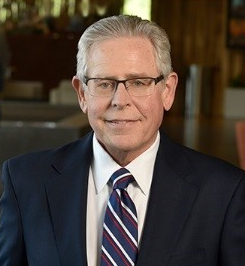 Don't call THR a 'hospital system': Inside CEO Barclay Berdan's vision for health care's future
Don't call THR a 'hospital system': Inside CEO Barclay Berdan's vision for health care's future
Barclay Berdan, CEO of Texas Health Resources, talks about the "unprecedented challenge" he faced just a few months into the job, why he won't call THR a "hospital system," and how he helped establish the world's largest Blue Zones community—in Fort Worth. Read our interview with Barclay.
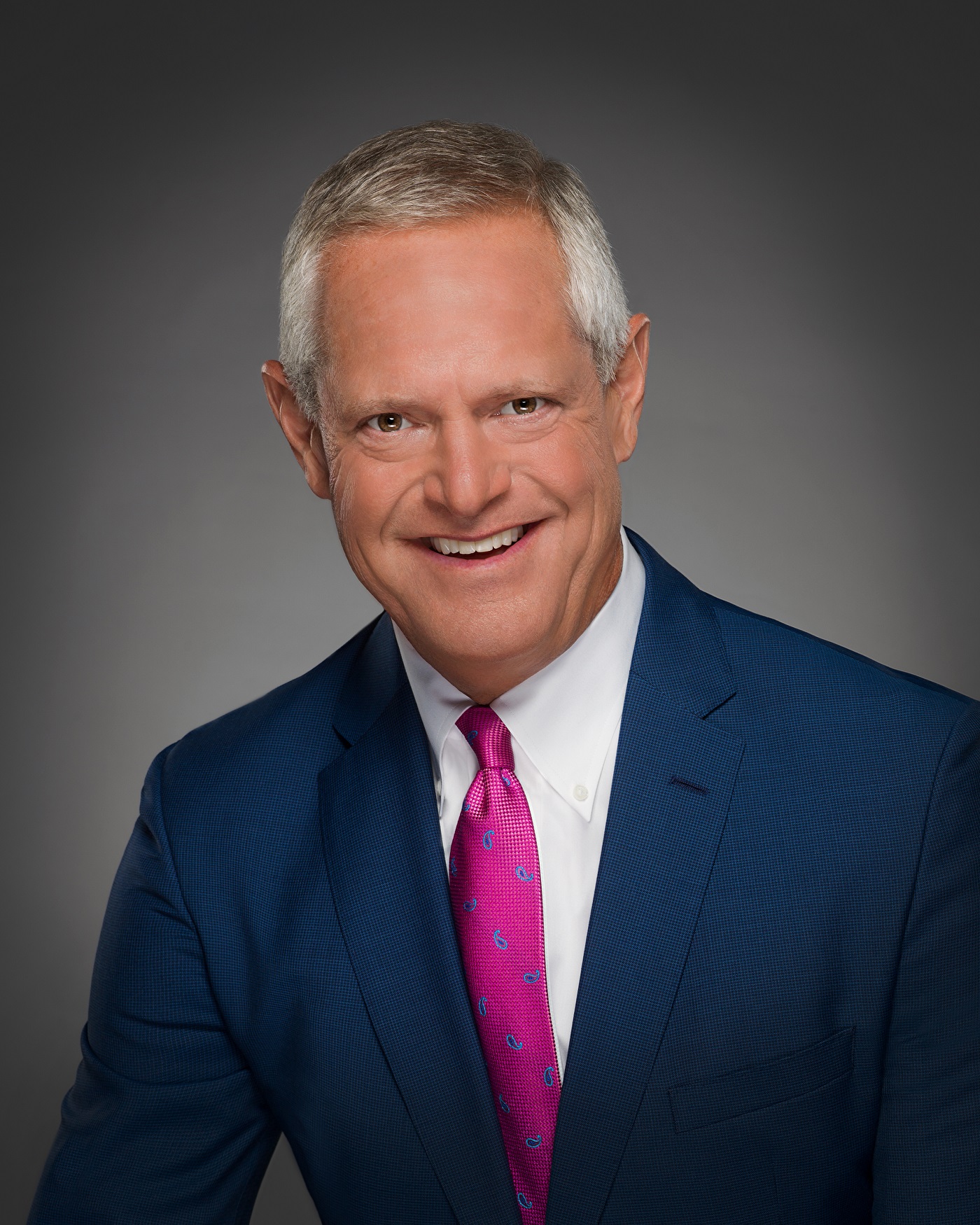 'A little bit of a pirate': How Kelby Krabbenhoft built a $6B system—and where he's taking Sanford next
'A little bit of a pirate': How Kelby Krabbenhoft built a $6B system—and where he's taking Sanford next
Kelby Krabbenhoft, president and CEO of Sanford Health, talks about the unprecedented CEO-philanthropist partnership behind Sanford's rapid growth, why a successful leader needs to be "a little bit of a pirate," and the merger that will make Sanford a nearly $6 billion health system. Read our interview with Kelby.
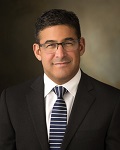 Marc Harrison promised to turn Intermountain into a 'Tesla.' He wasn't kidding.
Marc Harrison promised to turn Intermountain into a 'Tesla.' He wasn't kidding.
Marc Harrison, president and CEO of Intermountain Healthcare, talks about Intermountain's recently announced strategic reorganization, previews the launch of a "virtual hospital" to better serve rural communities, and shares the surprising worry that keeps him up at night. Read our interview with Marc.
Don't miss out on the latest Advisory Board insights
Create your free account to access 1 resource, including the latest research and webinars.
Want access without creating an account?
You have 1 free members-only resource remaining this month.
1 free members-only resources remaining
1 free members-only resources remaining
You've reached your limit of free insights
Become a member to access all of Advisory Board's resources, events, and experts
Never miss out on the latest innovative health care content tailored to you.
Benefits include:
You've reached your limit of free insights
Become a member to access all of Advisory Board's resources, events, and experts
Never miss out on the latest innovative health care content tailored to you.
Benefits include:
This content is available through your Curated Research partnership with Advisory Board. Click on ‘view this resource’ to read the full piece
Email ask@advisory.com to learn more
Click on ‘Become a Member’ to learn about the benefits of a Full-Access partnership with Advisory Board
Never miss out on the latest innovative health care content tailored to you.
Benefits Include:
This is for members only. Learn more.
Click on ‘Become a Member’ to learn about the benefits of a Full-Access partnership with Advisory Board
Never miss out on the latest innovative health care content tailored to you.
